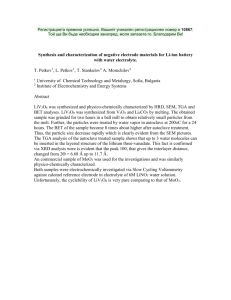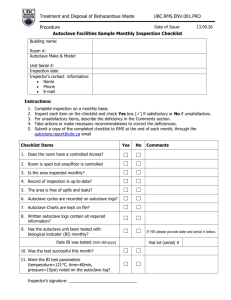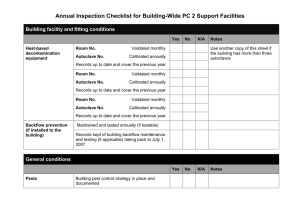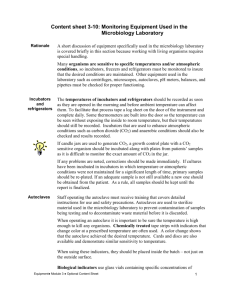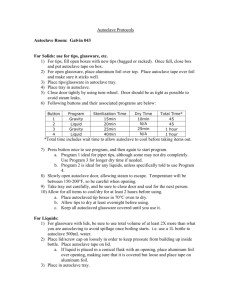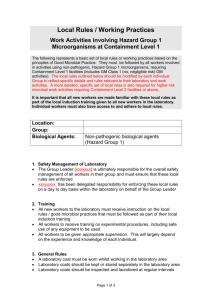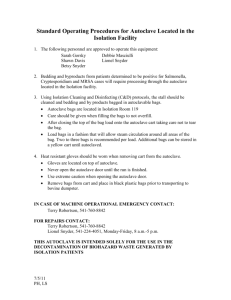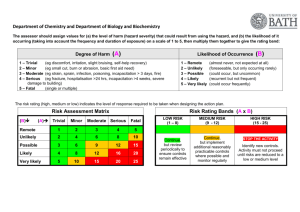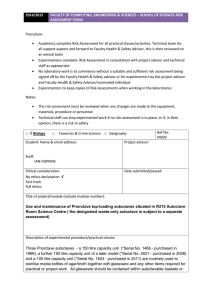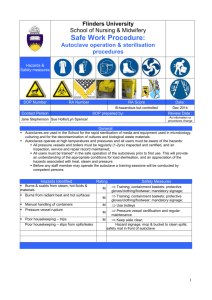Autoclave validation poster - EHS
advertisement
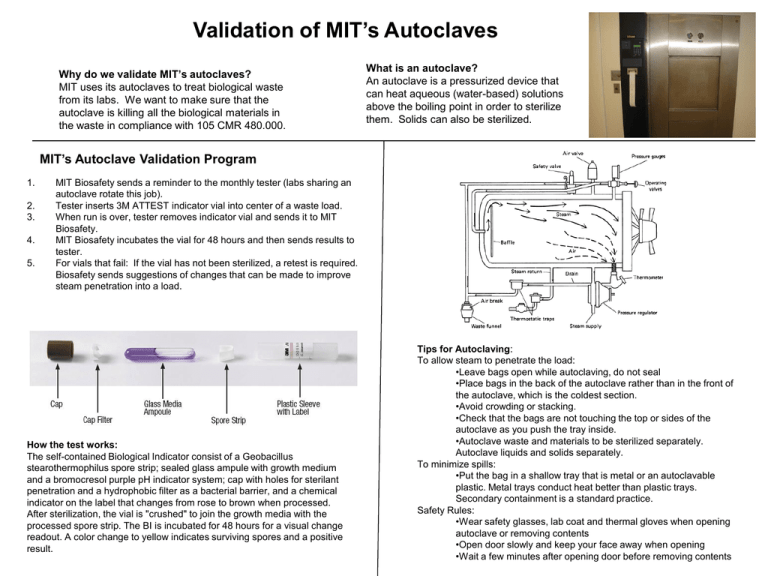
Validation of MIT’s Autoclaves Why do we validate MIT’s autoclaves? MIT uses its autoclaves to treat biological waste from its labs. We want to make sure that the autoclave is killing all the biological materials in the waste in compliance with 105 CMR 480.000. What is an autoclave? An autoclave is a pressurized device that can heat aqueous (water-based) solutions above the boiling point in order to sterilize them. Solids can also be sterilized. MIT’s Autoclave Validation Program 1. 2. 3. 4. 5. MIT Biosafety sends a reminder to the monthly tester (labs sharing an autoclave rotate this job). Tester inserts 3M ATTEST indicator vial into center of a waste load. When run is over, tester removes indicator vial and sends it to MIT Biosafety. MIT Biosafety incubates the vial for 48 hours and then sends results to tester. For vials that fail: If the vial has not been sterilized, a retest is required. Biosafety sends suggestions of changes that can be made to improve steam penetration into a load. How the test works: The self-contained Biological Indicator consist of a Geobacillus stearothermophilus spore strip; sealed glass ampule with growth medium and a bromocresol purple pH indicator system; cap with holes for sterilant penetration and a hydrophobic filter as a bacterial barrier, and a chemical indicator on the label that changes from rose to brown when processed. After sterilization, the vial is "crushed" to join the growth media with the processed spore strip. The BI is incubated for 48 hours for a visual change readout. A color change to yellow indicates surviving spores and a positive result. Tips for Autoclaving: To allow steam to penetrate the load: •Leave bags open while autoclaving, do not seal •Place bags in the back of the autoclave rather than in the front of the autoclave, which is the coldest section. •Avoid crowding or stacking. •Check that the bags are not touching the top or sides of the autoclave as you push the tray inside. •Autoclave waste and materials to be sterilized separately. Autoclave liquids and solids separately. To minimize spills: •Put the bag in a shallow tray that is metal or an autoclavable plastic. Metal trays conduct heat better than plastic trays. Secondary containment is a standard practice. Safety Rules: •Wear safety glasses, lab coat and thermal gloves when opening autoclave or removing contents •Open door slowly and keep your face away when opening •Wait a few minutes after opening door before removing contents


